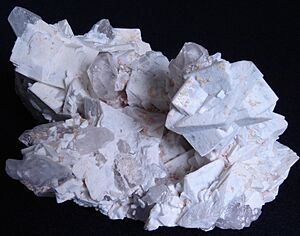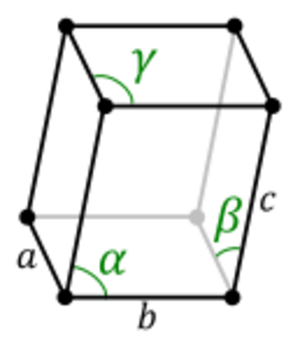Triclinic crystal system facts for kids
In the world of crystallography, which is the study of crystals, the triclinic crystal system is one of the seven main ways we group crystals based on their shape. Think of a crystal system as a way to describe the basic building blocks of a crystal using three imaginary lines, called vectors.
For triclinic crystals, these three lines are all different lengths. Also, the angles between these lines are all different from each other, and none of them are 90 degrees. This makes the triclinic system the least symmetrical of all the crystal systems. It's like trying to build a box where no two sides are the same length, and no corners are perfectly square!
Types of Triclinic Crystals
Even though triclinic crystals are the least symmetrical, they still have a few ways their atoms can be arranged. Scientists group them into two main types:
- Pedial: These crystals have the simplest arrangement. An example is a mineral called Tantite.
- Pinacoidal: These crystals have a bit more symmetry, but still not much. They have what's called a "center of inversion," which means if you imagine a point in the middle of the crystal, you can flip the crystal through that point and it looks the same. An example is Wollastonite.
Many common minerals belong to the triclinic system. These include plagioclase, microcline, rhodonite, turquoise, wollastonite, and amblygonite. All these minerals show the unique, uneven shapes of triclinic crystals.
See also
 In Spanish: Sistema cristalino triclínico para niños
In Spanish: Sistema cristalino triclínico para niños
- Crystal structure
- Crystal system



